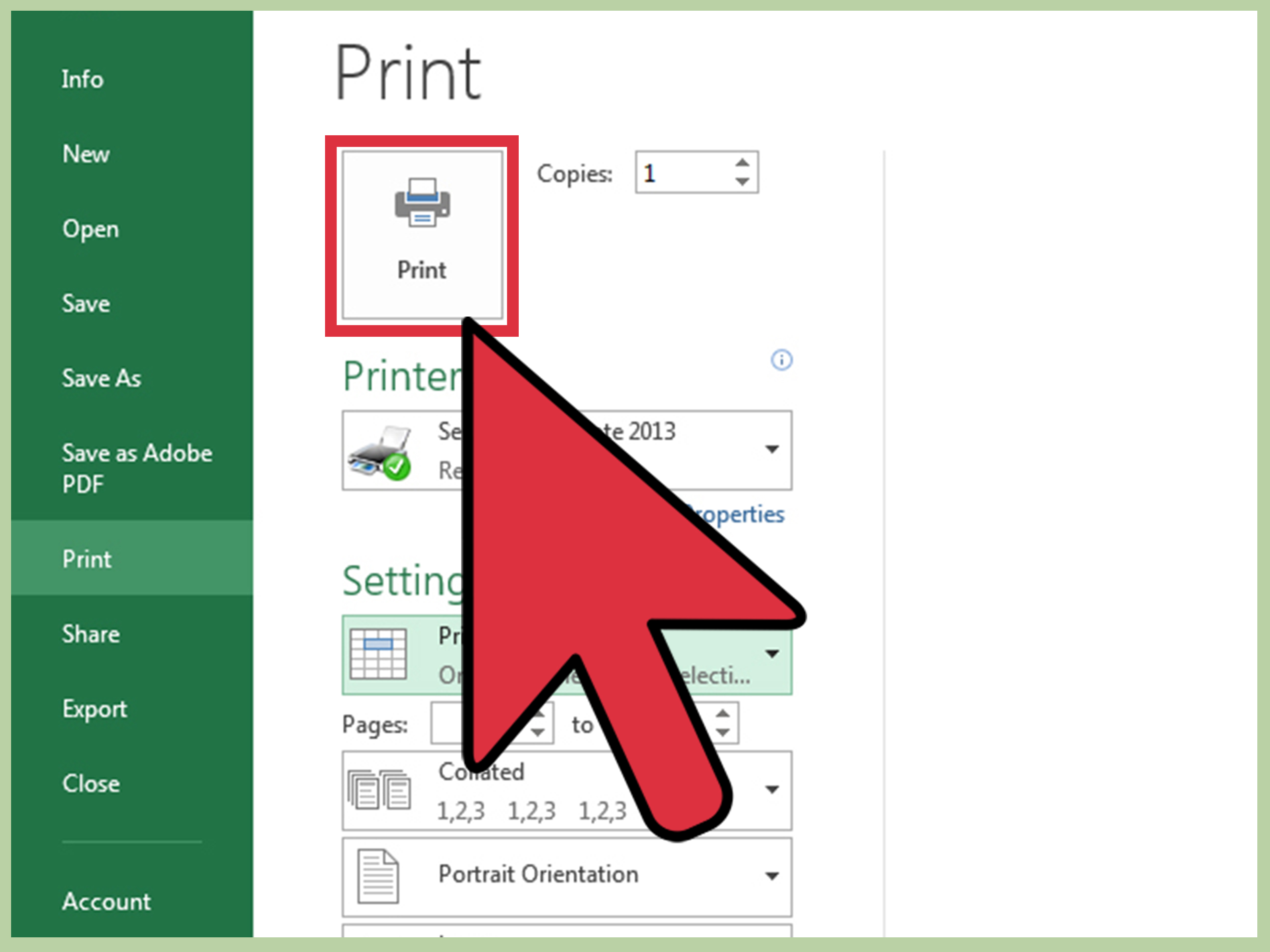Excel Magic: Print Your Sheet on One Page Easily

Ever found yourself struggling with an Excel sheet that spans multiple pages when you go to print it? It's a common issue many of us face. Whether you're compiling a report for your boss, preparing financial statements, or setting up a data analysis for a project, the ability to print your Excel spreadsheet on a single page can save time, paper, and hassle. In this detailed guide, we'll explore how to make your Excel print on one page without compromising readability or data integrity.
Why One Page Matters

Before diving into the “how”, let’s address the “why”. Printing your Excel sheet on one page ensures:
- Cohesion: Everything you need is in one place, making it easier for readers to digest the information without flipping pages.
- Professionalism: A single-page document looks cleaner and more organized.
- Convenience: It’s simpler to distribute and reference a single-sheet document.
Essential Steps to Print Excel on One Page

Let’s walk through the steps to ensure your Excel spreadsheet prints in a compact, readable format on a single page:
1. Adjust Page Layout

First, navigate to the Page Layout tab in Excel:
- Page Orientation: Choose Landscape for more width, often beneficial for wide spreadsheets.
- Margins: Reduce margins, but keep them legible. A common setting is Normal.
- Page Size: If you need more space, consider Legal size instead of Letter.
- Scaling: Use the Fit to option under Scaling to fit your data onto one page. Here’s how:
- Go to Page Layout > Scale to Fit
- Under ‘Scale’, select ‘Fit to:
- Set 1 page wide by 1 page tall
- Click ‘Ok’
2. Optimize Font Size and Style

Reduce the font size slightly, but ensure legibility:
- Select all cells or the necessary range (Ctrl + A).
- Go to Home > Font and decrease the font size, say from 12 to 10 or 11.
- Consider using a condensed font like Arial Narrow to save space.
3. Modify Column Width and Row Height

To fit more data:
- Manually adjust the width of columns by dragging the column border or using the right-click menu.
- For row height, do the same or use AutoFit to quickly adjust.
4. Use Headers and Footers Efficiently

Headers and footers can take up valuable space:
- Go to Insert > Header & Footer.
- Limit header/footer content to essential information only.
- Use ‘&P’ in the header/footer to print page numbers for reference.
5. Control Repeating Rows or Columns

If you need to repeat certain rows or columns:
- Go to Page Layout > Print Titles.
- Set the rows to repeat at the top or columns to repeat at left.
6. Use Page Breaks

To control where the page breaks:
- In Page Layout view, drag the page break to your preferred position.
- Or, select rows/columns and use Insert > Page Break to force breaks.
7. Check Preview

Before printing:
- Click on File > Print or use Ctrl+P for a preview.
- Adjust settings if the preview still shows multiple pages.
Summing Up the Process

Printing an Excel sheet on one page requires a blend of adjustments in page layout, formatting, and careful placement of data. By following these steps, you can create a compact yet comprehensive document, ensuring that your readers can easily understand the presented data in a single glance. From adjusting orientation and margins to scaling and placing page breaks, every tweak contributes to the final one-page masterpiece.
Troubleshooting Tips

Sometimes, despite your best efforts, your Excel sheet might still require two pages:
- Re-evaluate Scaling: Ensure that the ‘Fit to’ option under Scaling is set correctly.
- Content Reduction: Consider if some data or charts can be moved to an appendix or summarized.
- Remove Excess: Look for unnecessary headers, footers, or repeated data that can be minimized or eliminated.
- Use Page Layout View: This view gives a clearer understanding of how your sheet will be printed.
💡 Note: If your print preview still shows more than one page, consider using print area selection to focus on the essential data or utilize features like 'Ignore Print Area' to bypass unprinted areas.
Can I save different views of my Excel sheet for printing?

+
Yes, you can create custom views under the View tab that save different layouts or settings for printing. Name your views like ‘OnePagePrint’ for quick access later.
Will changing the print settings affect my spreadsheet’s structure?

+
Adjusting print settings only affects how your spreadsheet appears when printed, not its actual data or structure in Excel.
What if I need to print a sheet that’s too wide?

+
Consider:
- Switching to Landscape orientation
- Reducing font size or using a condensed font
- Decreasing column widths, if legible
- Using the ‘Fit to’ scaling option



